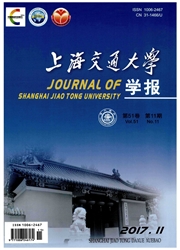

 中文摘要:
中文摘要:
太阳能电池输出功率随着温度升高而降低,半导体温差发电模块输出功率随着温差的增大而升高.结合两者输出功率随温度变化的关系,利用烟囱效应巧妙设计了一套具有负反馈作用的光伏-温差联合发电系统,并对其进行了效率和环境分析.结果表明:系统处于稳定工况时,温差模块可以提供输出功率4.3W,光伏电池比自然冷却方式下的输出功率增加6.9%,系统的光电转换效率增加1.42%,炯效率达到12.06%,在寿命期内比火力发电减排NO,9.7kg、CO2 742.9kg、SO2 9.6kg;系统可以有效地控制电池板与环境的温差在22℃左右,增加电池板的使用寿命,这对可再生能源的应用具有理论指导意义.
 英文摘要:
英文摘要:
The output power of solar cell decreases with the increase of temperature, while the output power of semiconductor thermoelectric power generation module increases with the increase of temperature difference. Based on their output power vs. temperature relationship mentioned above, an optimal system of photovoltaic-thermoelectric power generation was designed by using chimney effect, which possesses a negative feedback characteristic. By analysis, it can be seen that the out power adds 4.3W by using ther-moelectric module, and photovoltaic cell power increases 6.9 % in the system. This method can raise energy efficiency to 12.06%, which is higher 1.42% than that by natural cooling method. Moreover, the systern reduces emissions of NO, 9.7 kg, CO2 742.9 kg, SO2 9.6 kg during the apparatus lifecycle. At the same time, this system maintains temperature difference at 22 ℃ between photovoltaic cells and environment, which increases the solar cells life span.
 同期刊论文项目
同期刊论文项目
 同项目期刊论文
同项目期刊论文
 Influence of the magnetic scattering and interface transparency on superconductivity based on a ferr
Influence of the magnetic scattering and interface transparency on superconductivity based on a ferr Preparation of Poly(3-hexylthiophene) / graphene nanocomposite via in-situ reduction of modified gra
Preparation of Poly(3-hexylthiophene) / graphene nanocomposite via in-situ reduction of modified gra Crystalline and magnetic enhancement of nanocrystalline MnZn ferrites fabricated under a high magnet
Crystalline and magnetic enhancement of nanocrystalline MnZn ferrites fabricated under a high magnet Magnetic anisotropy and spin disorder in textured MnBi crystals synthesized by a field-inducing appr
Magnetic anisotropy and spin disorder in textured MnBi crystals synthesized by a field-inducing appr In situ photoemission study of interface and film formation during epitaxial growth of Er2O3 film on
In situ photoemission study of interface and film formation during epitaxial growth of Er2O3 film on Phthalocyanines-MWCNT hybrid materials: fabrication, aggregation and photoconductivity properties im
Phthalocyanines-MWCNT hybrid materials: fabrication, aggregation and photoconductivity properties im Reentrant Spin-glass behavior induced by the frustration of Fe-Fe interactions in Laves phase Nb1-xH
Reentrant Spin-glass behavior induced by the frustration of Fe-Fe interactions in Laves phase Nb1-xH AutoFP: a GUI for highly automated Rietveld refinement using an expert system algorithm based on Ful
AutoFP: a GUI for highly automated Rietveld refinement using an expert system algorithm based on Ful 期刊信息
期刊信息
